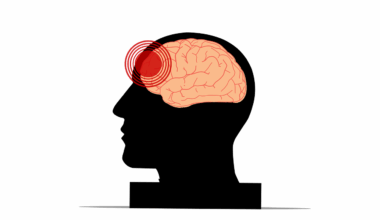Return-to-Play Criteria After Physical Therapy
Returning to play after an injury is a critical aspect of sports medicine and rehabilitation. The process involves thorough assessment and evaluation to ensure that athletes are physically and mentally fit to resume competitive activities. Professionals in physical therapy emphasize the importance of meeting specific return-to-play criteria, which encompass various factors. These criteria include physical strength, range of motion, pain levels, and functional capabilities. In addition, psychological readiness plays a vital role in an athlete’s return to their sport. Athletes must feel confident in their abilities, ensuring they can compete effectively without fear of re-injury. A systematic approach is essential, including regular assessments and potential adjustments to rehabilitation protocols designed to address an athlete’s unique needs. Following a structured progression leads to better outcomes and helps minimize potential setbacks. Therefore, it is pertinent to engage healthcare providers for personalized rehabilitation programs that cater to individual situations. Close collaboration among physiotherapists, coaches, and athletes facilitates a smoother transition back to play, enhancing the likelihood of long-term athletic success despite previous injuries.
Comprehensive evaluations are a cornerstone of establishing safe return-to-play criteria post-rehabilitation. Professionals typically use standardized tests and assessments to gauge an athlete’s readiness effectively. These evaluations often consider objective measures such as strength tests, agility drills, and sport-specific activities. For example, athletes recovering from knee injuries may perform hop tests or shuttle runs to demonstrate functional stability. Additionally, they have to show improvement in flexibility and muscle coordination before safely resuming competitive play. Moreover, subjective assessments, including athlete-reported outcomes regarding pain levels and confidence, are also vital in judging readiness. Clinicians take these insights into account when determining if an athlete can return to their sport safely. As a rule of thumb, the return-to-play protocol should combine physical tests with emotional and mental evaluations to confirm that the athlete possesses the required psychological resilience for competitive engagements. Thus, a multidisciplinary approach, featuring input from physicians, physical therapists, and psychologists, enhances the reliability of the return-to-play decision-making process, promoting better recovery outcomes for the athlete involved.
Understanding Physical Recovery
Physical recovery constitutes a significant component of return-to-play criteria in sports rehabilitation. Rehabilitation aims to restore an athlete’s functional ability while minimizing the risk of re-injury. Specific benchmarks must be achieved, focusing on strength, flexibility, endurance, and neuromuscular control. These benchmarks vary per sport and the individual athlete’s injury type. Moreover, the timeline for achieving these goals should be well defined, allowing for tailored programs. However, strict adherence to timelines should not jeopardize an athlete’s long-term health or performance. Therapists typically utilize progressive loading protocols, systematically increasing the demands on healing tissues. Additionally, they monitor the athlete’s response, adjusting rehabilitation techniques and severity based on progress. A critical aspect of this process is the establishment of recovery milestones that must be met before progression. Engaging athletes in their recovery is also crucial, enhancing motivation and adherence to rehabilitation protocols. While athletes may eagerly anticipate returning to play, it is essential that both they and their healthcare team ensure physical readiness, reducing the chances of setbacks and long-term issues that could result from premature return.
Acknowledging the psychological aspects of recovery contributes to effective return-to-play criteria. Mental readiness is just as vital as physical readiness, as an athlete’s mindset significantly influences their performance. Injuries often lead to fear and anxiety about re-injury or performance loss, which could hinder recovery. Therefore, professionals often incorporate psychological assessments alongside physical evaluations. Strategies for enhancing mental readiness may involve visualization techniques, goal-setting, and developing coping strategies for dealing with anxiety. Additionally, open communication between athletes and therapists strengthens the trust essential for rehabilitation success. A supportive environment fosters an athlete’s confidence and promotes a healthier return to sport. Regular meetings and check-ins can facilitate dialogue about concerns and doubts regarding readiness, which can be addressed promptly. This team approach not only paves the way for mental preparation but allows for holistic recovery catering to individual needs and fears. By integrating physical and psychological assessment strategies, healthcare providers can create an environment conducive to optimal recovery and ultimately lead an athlete on a sustainable path back to play, ensuring they are both physically and mentally ready.
Injury-Specific Considerations
Injury-specific considerations are crucial when developing return-to-play criteria after physical therapy. Different injuries demand tailored approaches that address the unique healing processes and functional requirements associated with each. For instance, a sprinter recovering from an ankle sprain may confront different challenges compared to a quarterback healing from a shoulder injury. Healthcare professionals must thoroughly evaluate the injury’s specific demands, as well as the athlete’s sport and position, to establish appropriate benchmarks. Variable recovery timelines and criteria can affect athletes differently, indicating that a one-size-fits-all approach is ineffective. Sports medicine professionals often develop return-to-play protocols based on extensive research, including best practices and empirical evidence related to injury recovery. Furthermore, consulting with experienced athletic trainers and physiotherapists allows for the incorporation of sport-specific standards into treatment protocols. Concurrently, they emphasize the athlete’s adaptation to exercise and strengthening protocols leading to great recovery outcomes. Ultimately, a personalized return-to-play plan should focus on each athlete’s unique recovery journey to address specific concerns and ensure a successful transition back to their sport.
During the return-to-play process, ongoing communication among the healthcare team, coaching staff, and athletes is pivotal for success. Regular updates about an athlete’s progress foster a team-oriented approach to recovery, ensuring everyone shares the same vision for the athlete’s return. Report meetings can provide insights into current physical and emotional states, allowing for adjustments to rehabilitation plans if necessary. Continuous feedback mechanisms enable athletes to voice their concerns or difficulties, aiding therapist adjustments and fostering increased confidence. Additionally, involvement in team practices, even in limited capacities, can help promote familiarity and maintain crucial social connections. This connection to the sport reduces feelings of isolation and encourages an athlete’s psychological reintegration into their role. Coaches also play a significant role by keeping decision-making transparent, instilling trust in their athletes regarding safety and rehabilitation goals. Holding discussions about observation metrics to gauge readiness is beneficial in clarifying expectations. Therefore, it is pertinent that all parties work collaboratively to ensure the athlete’s ultimate success, sharing responsibilities for monitoring readiness and providing adequate support throughout the process.
Final Considerations for Return-to-Play
The final considerations for return-to-play criteria focus on the balance between recovery and performance readiness. Committing to a structured rehabilitation process is crucial for minimizing long-term complications while optimizing productiveness when athletes return to their sport. Professionals in sports medicine typically recommend that athletes undertake comprehensive follow-up assessments combined with objective measures correlating to performance markers. These evaluations not only assess physical capacity but also the sport-specific skills needed for optimal performance. Furthermore, maintaining ongoing engagement with the athlete enhances motivation and accountability for adherence to rehabilitation protocols. This engagement can make the stabilization of physical capacities and psychological readiness more effective. As a final step, healthcare professionals should ensure that athletes have a clear understanding of what to expect upon returning to play, as well as the importance of maintaining their long-term health post-recovery. Ongoing training with gradual intensity is critical for establishing a successful transition back to competitive environments. Ultimately, a well-coordinated plan involving communication, organization, understanding, and continuous evaluation can significantly enhance the chances of a successful return to play without jeopardizing future performance or health.


